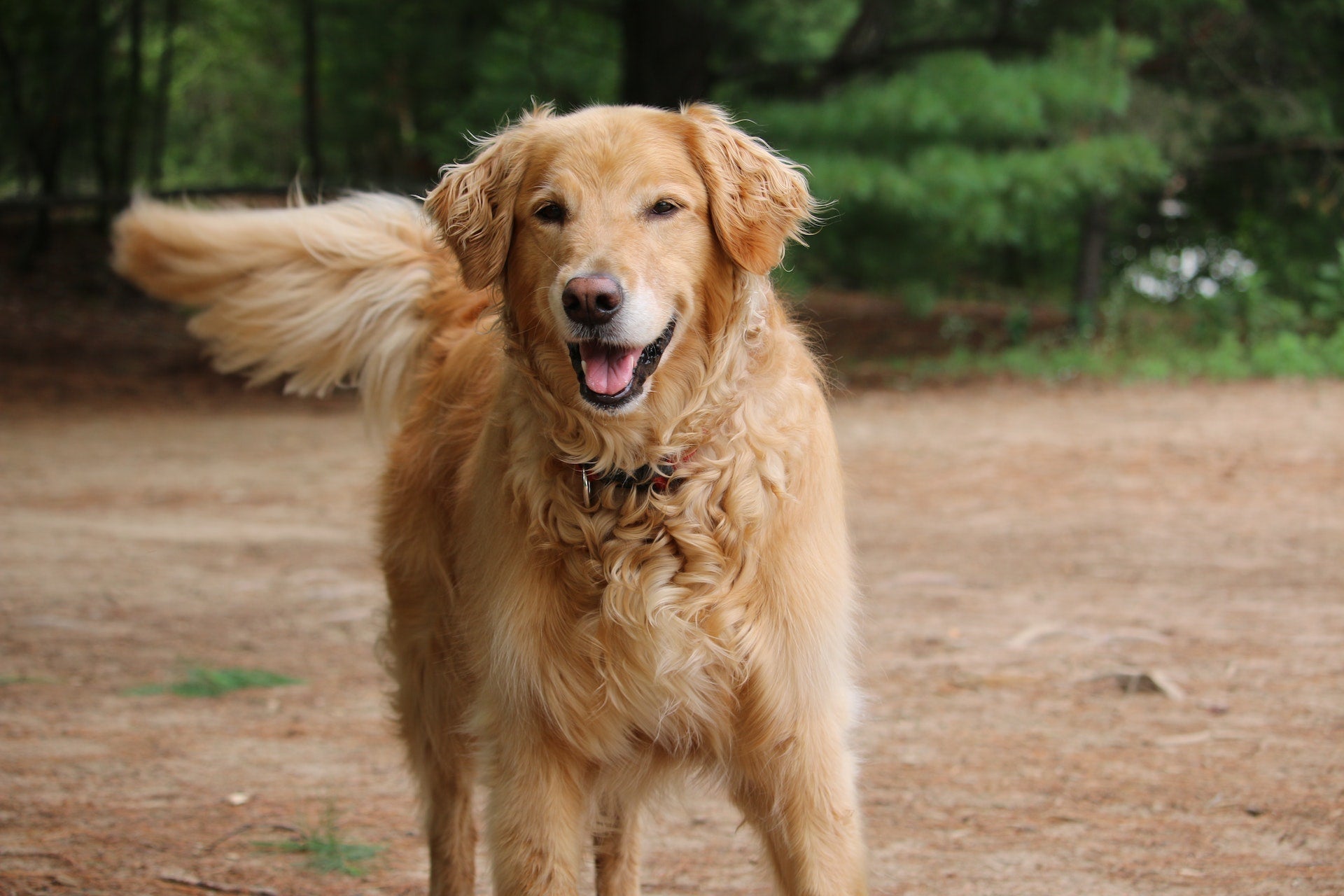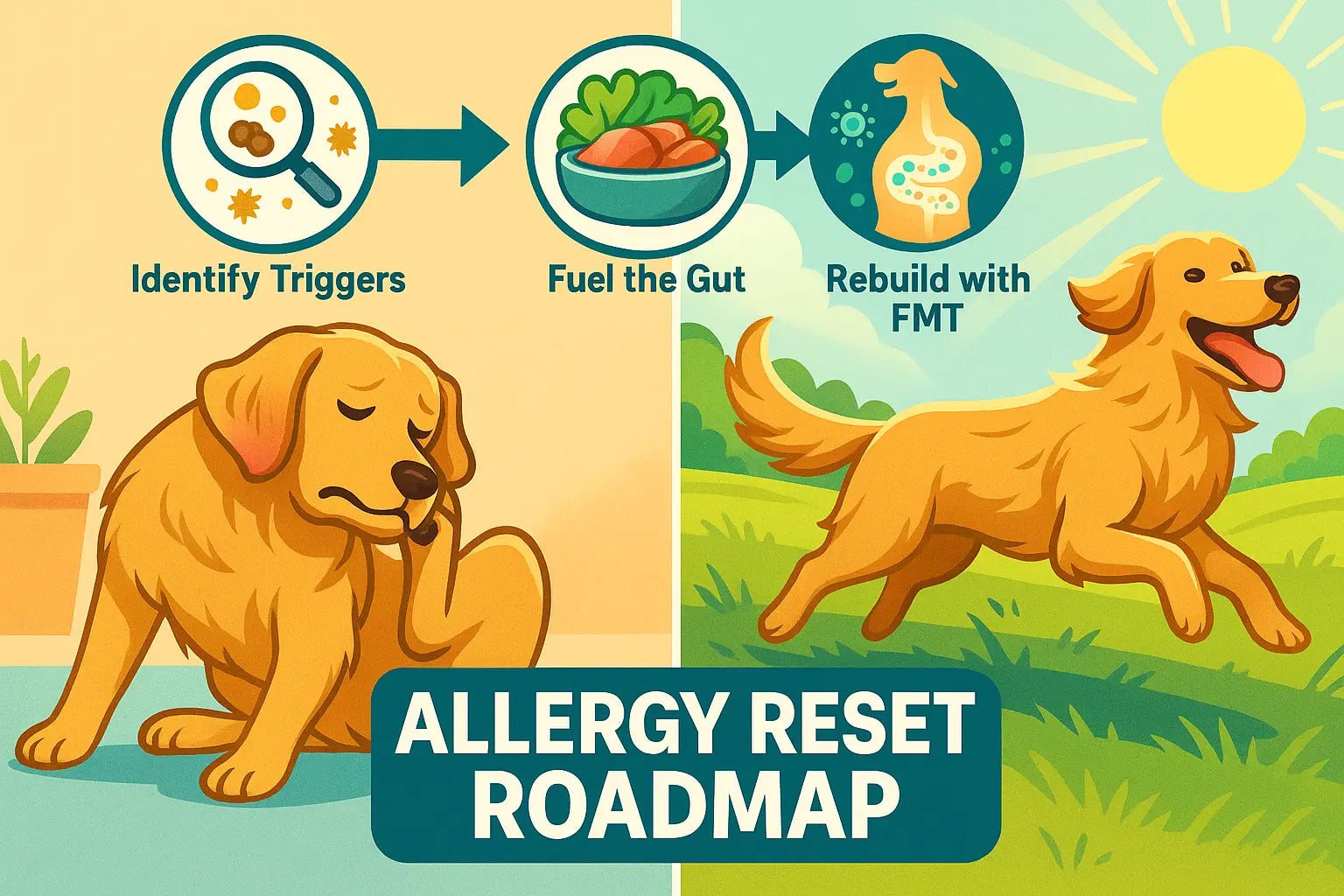Hi! I’m Melissa Natanson-new to the Legacy Biome team, but definitely not new to gut health. I’m a holistic pet health coach, canine nutritionist, and your pet’s gut health advocate.
I’ve spent years helping pet parents understand the power of the microbiome because I’ve seen firsthand how it can completely transform a dog’s life.
BUT- I didn’t set out to become a pet gut health advocate.
I didn’t plan to learn the details of canine digestion challenges, the world of microbiomes, or fecal microbiota transplants (FMT).
But when your soul dog starts unraveling—and no one has real answers—you learn. I wish I could say I figured it out quickly, but the truth is, it’s been a journey—one filled with setbacks, breakthroughs, and a whole lot of determination.
What started as itchy skin and so-called "allergies" turned into a gut health mission that changed both my dog’s life and mine. And it’s why I’m now part of the Legacy Biome team-sharing stories, science, and solutions for the pet parents who need them most.
This is Darla’s story. And mine, too.
The Signs Were There All Along
When we first rescued Darla twelve years ago, she was covered in scabs, losing the hair around her mouth, and constantly scratching. If the wind picked up, she broke out in hives. I can’t count how many vets told me, “It’s just allergies. Probably inhalant.”
Cue the Benadryl. The shampoos. The rotating foods. The steroids.
But nothing ever fixed it.
It wasn’t until she was about five or six that I had what I now call my “gut awakening.” She started slowing down. Her belly always seemed tender. Her digestion wasn’t great. And then one day on a walk, she began to cough and regurgitate and out came a mix of saliva and blood. She was aspirating her own fluids.
We rushed to the ER.
Turns out, Darla had ulcers. Likely bleeding ones. And her digestion was wrecked.
We did a food intolerance test, and it lit up like a Christmas tree. Reactive to nearly everything. Leaky gut, they said.
But no one really told me what to do about it.
I was left with a very sick dog and a list of foods she “couldn’t” have.
But I’d been here before—at least in some way.
Years earlier, I had lost my mom to a rare GI cancer. That experience pushed me to study gut health in humans, learning how the microbiome could impact overall health. I couldn’t help but think about how much Darla’s struggles mirrored some of the concepts I’d learned.
So, I started applying that knowledge to Darla—using herbs and food therapy to support her digestion and reduce inflammation. I knew I had to address her body as a whole system, not just treat symptoms.
And for a while, it seemed like we were on the right track.
The Truth About Probiotics (and Why They Weren’t Enough)
I started using probiotics. Good ones. The kind with the high CFU (colony forming units) counts that everyone swears by. Back then, the logic was simple: more CFUs = better gut health.
So I went all in on the high-count probiotics, the ones boasting 20 billion CFUs or more. I thought I was doing the best thing for Darla.
And it helped— to a degree.
Darla’s rashes calmed down, her energy picked up, and I thought we’d finally found some stability.
But I could still sense something wasn’t quite right. It was like we were just barely keeping things in check – not really getting to the root issue. AND, her GERD, reflux and burping issues persisted.
Here’s the thing: Probiotics can seed the gut, but they don’t stick around. They offer temporary support—like visitors passing through. If the terrain isn’t right—or if there isn’t enough microbial diversity—they can’t fully restore balance. In Darla’s case, it was like trying to plant flowers in depleted soil.
And about seven years later, it all came crashing down in the form of a C. diff nightmare.
The Crash: C. diff, C. perfringens, and a Dog on the Edge
About three years ago, we were fostering a rescue dog. Looking back, I think the stress of having a new dog in the house made Darla even more vulnerable. That foster dog likely brought home Clostridium difficile (C. diff)—and despite Darla being on one of the best probiotics at the time, she got hit. Hard.
Not once, but twice.
C. diff isn’t just a gut problem—it can take dogs down fast, and in severe cases, it can even cause kidney failure. In humans, up to 30,000 people die each year from C. diff infections in the U.S. alone. While dogs are less commonly affected, when it strikes, it’s brutal. The bacteria can cause severe diarrhea, dehydration, sepsis, and multi-organ failure.
Darla spiraled quickly—diarrhea, GI inflammation, regurgitation, her kidney levels spiked, and I watched as her health plummeted. We were in scary territory.
The worst part? C. diff and C. perfringens can be antibiotic-resistant- so those were a “no go” and just throwing high-dose probiotics and herbs at it wasn’t cutting it.
So, I brought in my human holistic knowledge and started applying what I knew to Darla’s situation. I knew FMT had potential, but after one failed attempt, I needed a more reliable source.
Enter Legacy Biome.
In cooperation with my vet—who had mentioned it as a promising option—we started using the small caps twice a day, combined with rectal ozone therapy. Honestly, I didn’t expect miracles. But within just a few days, everything started to change:
- The diarrhea stopped
- She started perking up
- Her gut calmed down
Nine days in, I needed proof that we were really making progress, so we ran a PCR stool test. And guess what?
Negative for Clostridium.
We’d finally turned a corner.
Why I Believe in FMT—and Why I Joined the Legacy Biome Team
That experience changed me.
Darla had been dealing with a microbiome imbalance her entire life. The C. diff episode just exposed how fragile her gut ecosystem really was.
It taught me that health isn't just about what we feed—but what’s inside to process and respond to it.
I’d spent years chasing symptoms: itching, hives, regurgitation, intolerance—and all of it stemmed from her gut terrain. That’s where FMT (Fecal Microbiota Transplant) is completely different.
Unlike probiotics, FMT facilitates true microbial engraftment. That means the healthy microbes from the donor stool aren’t just passing through—they colonize, take root, and begin to rebuild the ecosystem.
This allows the dog’s own gut to gradually restore its natural resilience and diversity.
After seeing what FMT did for Darla, I knew this wasn’t just a quick fix. It was a foundational approach to health that addressed the gut as the core issue.
Since that experience, I’ve spent years helping other pet parents like you get to the guts of what’s going on—using my background as a holistic pet health coach and canine nutritionist to guide them.
That’s why I joined Legacy Biome—not just as a pet parent who’s been through it, but as a gut health advocate committed to making sense of it all.
I want to share what I’ve learned, honor Darla’s story (she’s now 15yrs old!) and help you understand the invisible world inside your pet that holds the power to heal.
Together, we’ll break down the science—with vets, experts, and real stories from the field—to make it digestible (pun intended).
I want you to feel empowered, informed, and confident—because with Legacy Biome leading the way, we’re not just hoping for change—we’re making it happen.
Stick around…there’s more to digest, coming soon!
“Pawsitive” Vibes!
Melissa.





Leave a comment
This site is protected by hCaptcha and the hCaptcha Privacy Policy and Terms of Service apply.